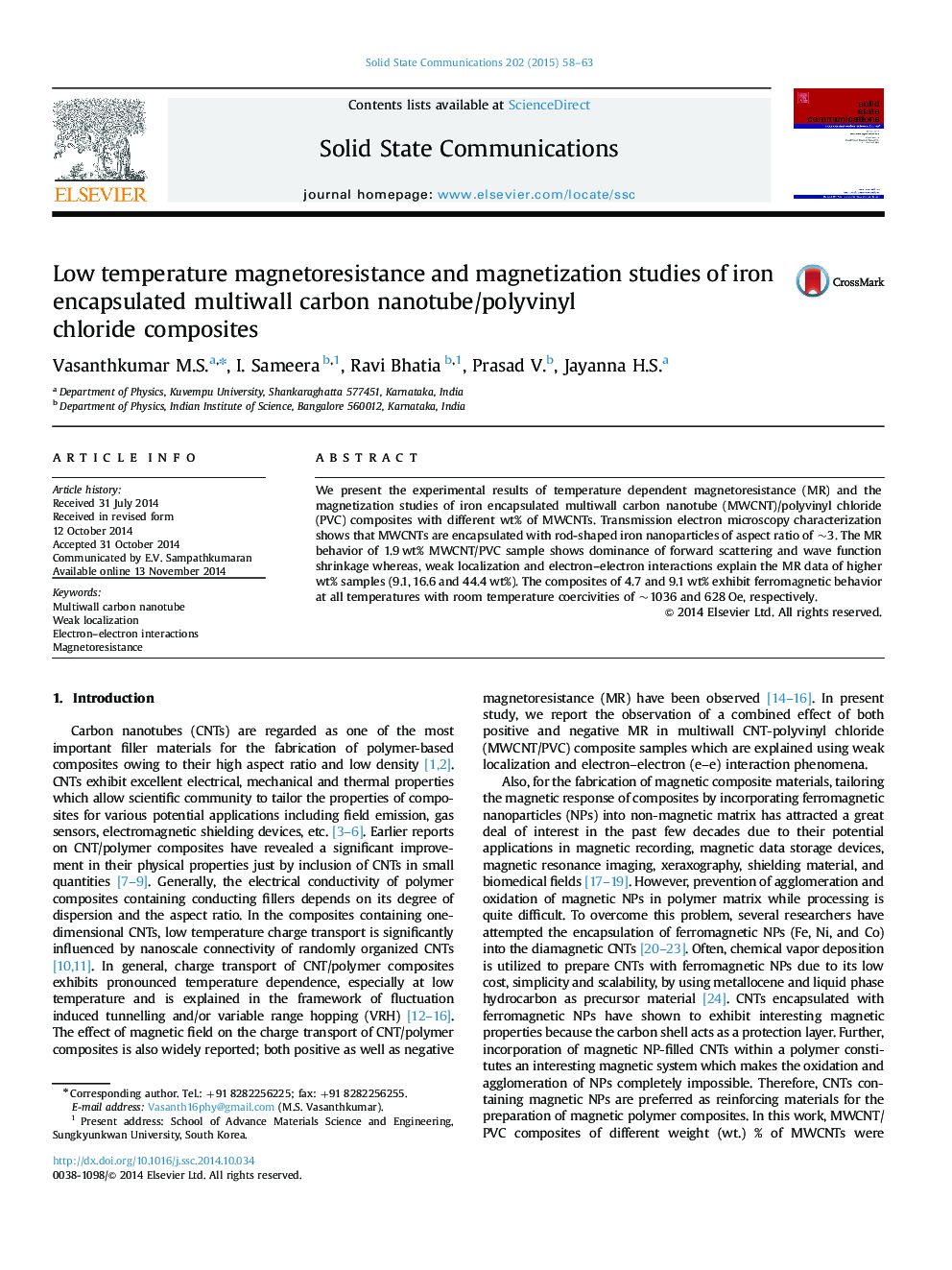| Article ID | Journal | Published Year | Pages | File Type |
|---|---|---|---|---|
| 1591670 | Solid State Communications | 2015 | 6 Pages |
•MWCNT/PVC composites exhibit an overall negative magnetoresistance (MR).•However, a combined effect of negative and positive MR is observed in all samples.•MR of 1.9 wt% sample is understood by forward scattering and wave function shrinkage.•MR of >1.9 wt% sample is explained by weak localization and e–e interactions.•MWCNT/PVC composite of 4.7 wt% exhibit enhanced coercivity ~1663 at 10 K.
We present the experimental results of temperature dependent magnetoresistance (MR) and the magnetization studies of iron encapsulated multiwall carbon nanotube (MWCNT)/polyvinyl chloride (PVC) composites with different wt% of MWCNTs. Transmission electron microscopy characterization shows that MWCNTs are encapsulated with rod-shaped iron nanoparticles of aspect ratio of ~3. The MR behavior of 1.9 wt% MWCNT/PVC sample shows dominance of forward scattering and wave function shrinkage whereas, weak localization and electron–electron interactions explain the MR data of higher wt% samples (9.1, 16.6 and 44.4 wt%). The composites of 4.7 and 9.1 wt% exhibit ferromagnetic behavior at all temperatures with room temperature coercivities of ~1036 and 628 Oe, respectively.
